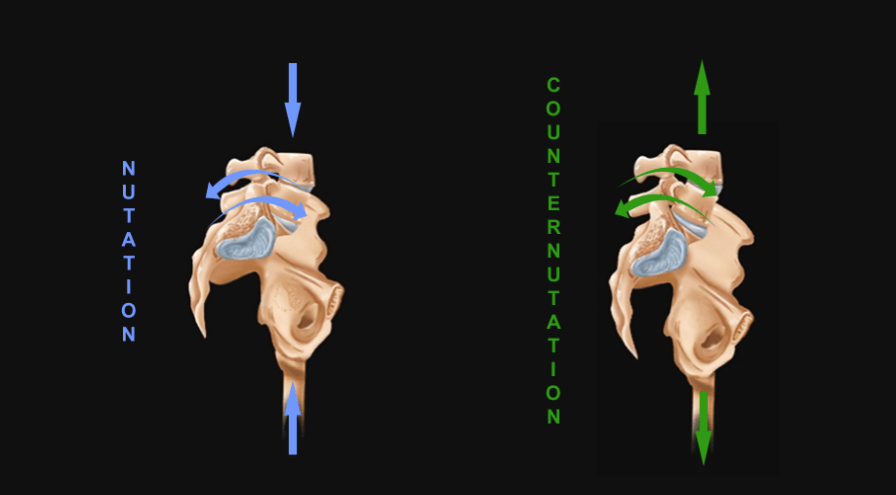
Nutation and counternutation are commonly used terms in the medical fields. However, beyond just knowing what the movements are, many don’t have the full grasp of just how important they are. The Serola Theory on biomechanics dives deep into these two functions and explains exactly what these movements are doing and how they apply to the body as a whole. With all of this research done, let’s try to take these two functions and simplify them to make them more understandable.
First, we have to realize that the sacroiliac joint is the center of our body, e.g. the “core structure.” It is where the upper body meets the lower body and, therefore, the center of motion. There are a number of ways to describe motion in our bodies, e.g. flexion/extension, axial rotation, etc. but, when it comes down to how the body moves in response to a load, the simplest description may be considered to be shock absorption and rebound. The sacroiliac joint, being the center of motion, is also the center of shock absorption.
Shock absorption does not necessarily mean a sudden action; it is the process of absorbing a force, for example, lifting a weight or shifting our weight from one leg to the other. Each joint in the foot, leg, pelvis, and spine participates in absorbing the force (weight). Each area has a name for the shock absorption/rebound motion that occurs. In the foot, it is called pronation/supination, in the spine, lordosis/kyphosis, and in the sacroiliac joint, nutation/counternutation.
So, nutation is the motion that occurs when force (weight) is absorbed at our core, the sacroiliac joint, and occurs in the direction of gravitational forces (toward the ground). Counternutation is the body’s response, lifting the joint up against gravity.
At the sacroiliac joint, we consider the movement of the sacrum. Nutation occurs when the sacrum absorbs shock; it moves down, forward, and rotates to the opposite side. In rebound (counternutation) the sacrum moves up, backward, and rotates to the same side that absorbs the force.
At the same time, the ilium rotates in the opposite direction. Body weight causes the sacrum to move down and forward, while force from the ground, coming up through the legs, causes the ilium to move down and backward (for simplicity, we won’t discuss the rotational aspect). These two forces meet at the sacroiliac joint and force it into nutation. At the bottom point of nutation, the ligaments momentarily absorb the full weight, and the sacrum and ilium reverse direction, as they rebound into counternutation. However, when the force is greater than the ligaments can withstand, they sprain, and the core becomes unstable…more on that in another blog. To better visualize the concepts of motion mentioned above, please watch the video below.
Too often, health professionals look at the body as a collection of parts. Previously, there was no central model that ties the musculoskeletal system into a functioning whole; this is what the Serola Theory is attempting to establish. First, we have to understand the core, and how the core affects the rest of the body. Since the sacroiliac joint is the core, the movements of nutation and counternutation are reflected up through the spine, and down through the legs, where we recognize them as flexion, extension, and rotation. In this manner, injury to the sacroiliac joint will be expressed in the rest of the structure. With this realization, we can understand how the body functions, and dysfunctions, as an integrated system, and we can see an injury developing before it becomes evident.
Did this article interest you? Read even more like this one by going to our main Blog Page. Do you have any suggestion for topics or maybe have something you would like Dr. Serola to elaborate on? Contact us anytime and let us know or leave a comment below!

